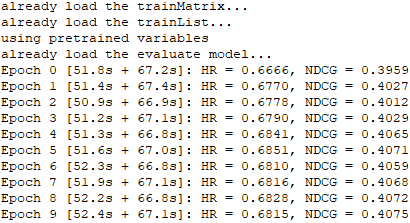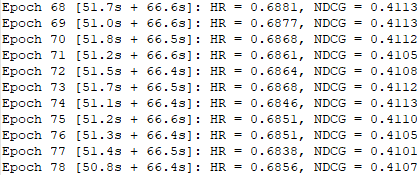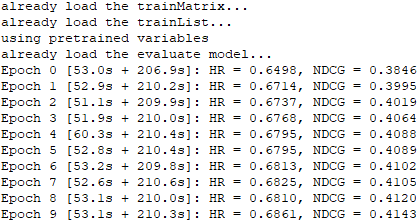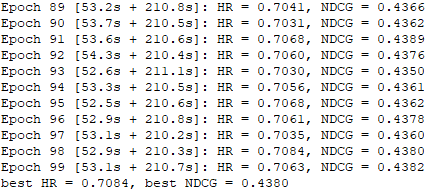TensorFlow Implementation of Deep Item-based Collaborative Filtering Model for Top-N Recommendation
This is the official implementation for the paper as follows, which is based on the implementation of NAIS (TKDE 2018):
- Deep Item-based Collaborative Filtering for Top-N Recommendation Feng Xue, Xiangnan He, Xiang Wang, Jiandong Xu, Kai Liu, & Richang Hong, ACM Transactions on Information Systems (TOIS 2019).
Two deep collaborative filtering models: DeepICF & DeepICF+a. To target the models for implicit feedback and ranking task, we optimize them using log loss with negative sampling.
Please cite our paper if you use our codes. Thx!
- Python: '2.7'
- TensorFlow: 'r1.0'
- Numpy: '1.13'
Run DeepICF (with FISM item embeddings pre-training):
python DeepICF.py --path Data/ --dataset ml-1m --epochs 100 --verbose 1 --batch_choice user --embed_size 16 --layers [64,32,16] --regs [1e-06,1e-06] --reg_W [0.1,0.1,0.1,0.1] --alpha 0.5 --train_loss 1 --num_neg 4 --lr 0.01 --batch_norm 1 --pretrain 1
Output of DeepICF:
Run DeepICF+a (with FISM item embeddings pre-training):
python DeepICF_a.py --path Data/ --dataset ml-1m --epochs 100 --beta 0.8 --weight_size 16 --activation 0 --algorithm 0 --verbose 1 --batch_choice user --embed_size 16 --layers [64,32,16] --regs [1e-06,1e-06,1e-06] --reg_W [10,10,10,10] --alpha 0 --train_loss 1 --num_neg 4 --lr 0.01 --batch_norm 1 --pretrain 1
Output of DeepICF+a:
We provide two processed datasets: MovieLens 1 Million (ml-1m) and Pinterest (pinterest-20).
train.rating:
- Train file.
- Each Line is a training instance: userID\t itemID\t rating\t timestamp (if have)
test.rating:
- Test file (positive instances).
- Each Line is a testing instance: userID\t itemID\t rating\t timestamp (if have)
test.negative:
- Test file (negative instances).
- Each line corresponds to the line of test.rating, containing 99 negative samples.
- Each line is in the format: (userID,itemID)\t negativeItemID1\t negativeItemID2 ...
Update Date: Feb 23, 2019



